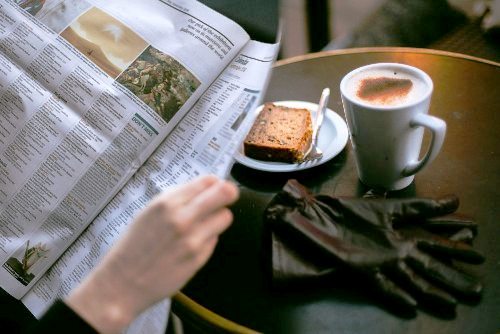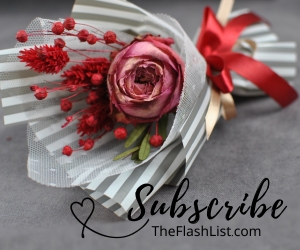
If you're looking to elevate your home's interior design but lack inspiration and don't know where to start, here's an idea: take a look in the mirror! The image that reflects back at you might just point you in the right direction. It's often said that we shouldn't judge a book by its cover, but we can learn a lot about someone by simply looking at what they're wearing. Their lifestyle, financial situation, interests, emotions, ambitions, and even their profession are often reflected in their fashion choices. For example, when someone enjoys accessorising their outfits with the different backpacks and bags from Disney, it's pretty obvious they're a fan of the films and animations released by the studio. Clothes and accessories offer tiny glimpses into our inner universes, revealing people's personalities and preferences to the world.
Homes are no different. The way they are arranged and decorated provides a window into the lives of those who inhabit them. This parallel tells us that even though fashion and interior design are two distinct domains, they serve similar purposes as forms of self-expression and can, therefore, borrow from one another. We can see this interdependence play out in the home collections released by famous fashion houses like Versace and Armani or on the runway, where the setting is used to complement designers' collections. So, if you want to create an interior design that's as unique as you are, it makes perfect sense to take advantage of the interplay of fashion and home décor and let your sense of style guide you. This can turn into a wonderful journey of self-discovery that will help you come up with original ideas and transform your spaces.
The Intersection of Fashion and Home Décor
Integrating your fashion style into your interiors sounds like a great idea in theory, but how do you put it into practice? It's not necessarily a simple process, as it implies a bit of introspection, great attention to detail, and the ability to maintain a balance between functionality and aesthetics. If this sounds like a lot of work, try following these steps for a smoother experience.
Define your style
Since the purpose here is to merge your style with your spaces, you should obviously start by analysing your wardrobe and determining which clothing style defines you best. You might be drawn to a certain aesthetic in particular, or you might prefer more than one style. You don't have to fit into a certain category perfectly, but you need to know which way you're leaning fashion-wise. Here are a few examples for inspiration:
- Classic
- The focus falls on quality rather than quantity, and the choice of well-cut simple pieces that can be easily mixed with one another, creating outfits that transcend trends and remain fashionable despite the passage of time. The neutral colors and refined silhouettes might not be the most eye-catching, but they exude an air of quiet elegance and make one look good under any circumstances. In terms of interior design, the classic ethos can be expressed through neutral or earthy colors, traditional furniture, natural materials like wood, and plush fabrics like velvet.
- Modern
- It's all about staying up to date with the latest trends and looks in the fashion world, so this style is extremely versatile, often incorporating simple lines, bold colors and statement pieces to create polished and sophisticated looks. If you like this aesthetic, you can re-create it in your home by incorporating cutting-edge designs, rich colors, smart home features, contemporary art pieces and custom-made furnishings.
- Minimalist
- When applied to fashion, the less is more philosophy translates into simple and functional designs, geometric lines, and minimum embellishments. This results in laid-back and sleek outfits that are effortlessly chic. For your home, the minimalist look is mirrored in streamlined furnishings that prioritise functionality, clutter-free airy spaces, and a monochromatic or muted color palette.
- Boho
- This style can be described as a whirlwind of dazzling patterns, earthy tones, natural materials, layered jewellery and diverse textures, with ethnic elements often being featured. This eclectic mix makes for the most unconventional and unique ensembles. For boho home decor, a similar combination of contrasting and complementing items is required. Rattan furniture, macramé decorations, plants, vintage objects and any other piece that reflects your passions is a welcome addition.
Focus on Colors, Prints and Textures
Before you go rushing to your living room and start decorating it with whatever items you think might reflect your fashion style best, you should take a moment to reflect on three main elements, namely colors, prints and textures. Pay attention to the dominant colors in your closet and think about the nuances that you reach out for the most. If you're a fan of neutrals, for example, you might want to use these as the base for your design.
The same goes for patterns. The prints and patterns that you enjoy wearing can serve as inspiration for choosing elements that add interest and dimension to your interiors. For instance, if you have a passion for floral prints, you can replicate it in your home through floral wallpaper or a carpet with floral motifs. As for textures, the fabrics that hang in your closet can be a good starting point for choosing the fabrics and textures for your house and can be integrated into items such as curtains, throws, cushions, rugs, and so on.
From Your Wardrobe to Your Living Space
So, you know exactly where your heart lies in terms of fashion style, and you're ready to align your home's aesthetic with it. You don't need to follow any rules or guidelines other than making sure you stay consistent. Creating a mood board that links different style elements to their home design equivalents might simplify the process. Fashion can indeed serve as a great source of inspiration for interior design – and vice versa – and as long as you have a clear vision of your fashion style, you'll have no issue bringing that vision into your home.
MORE ON THE FLASH LIST
































